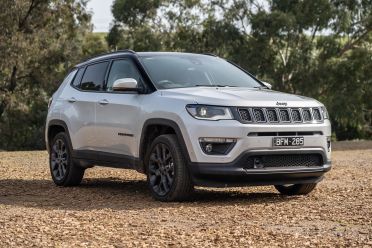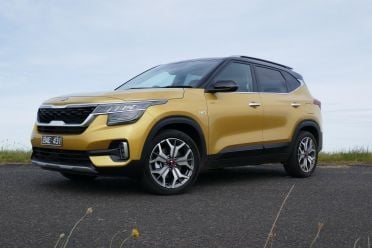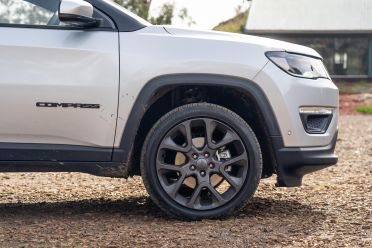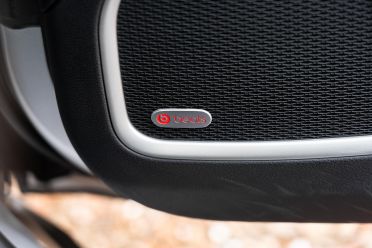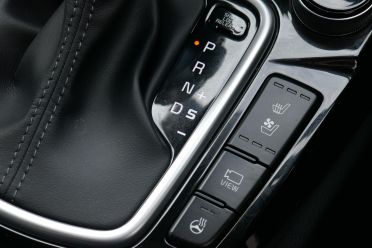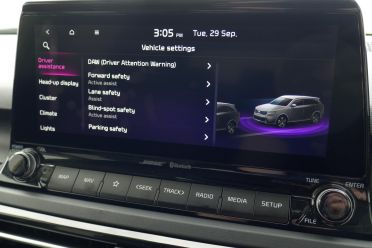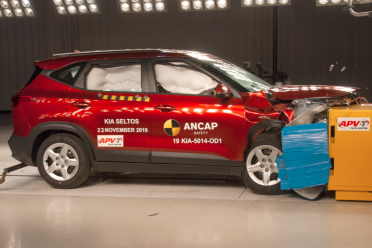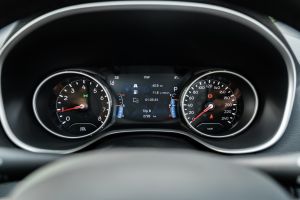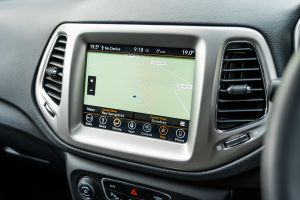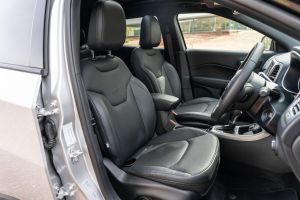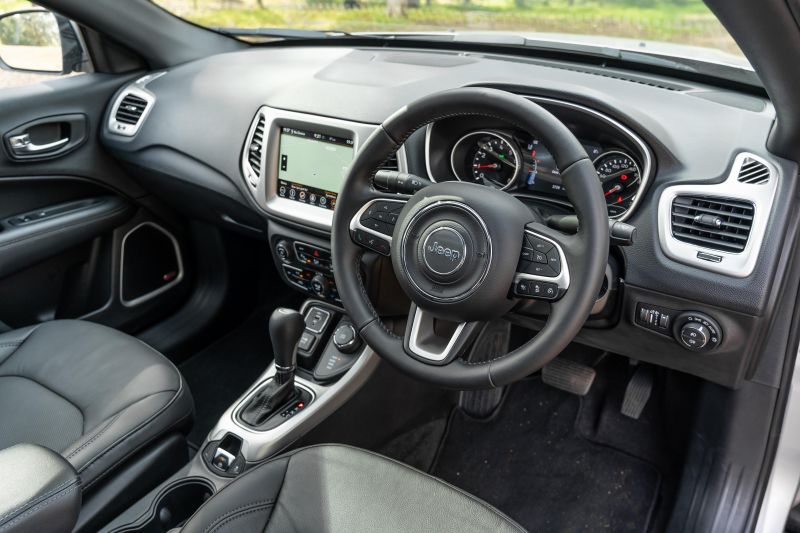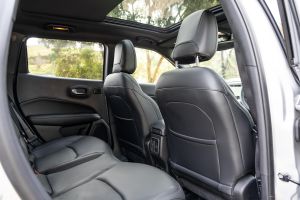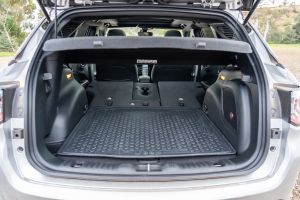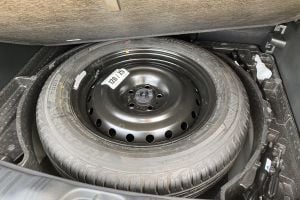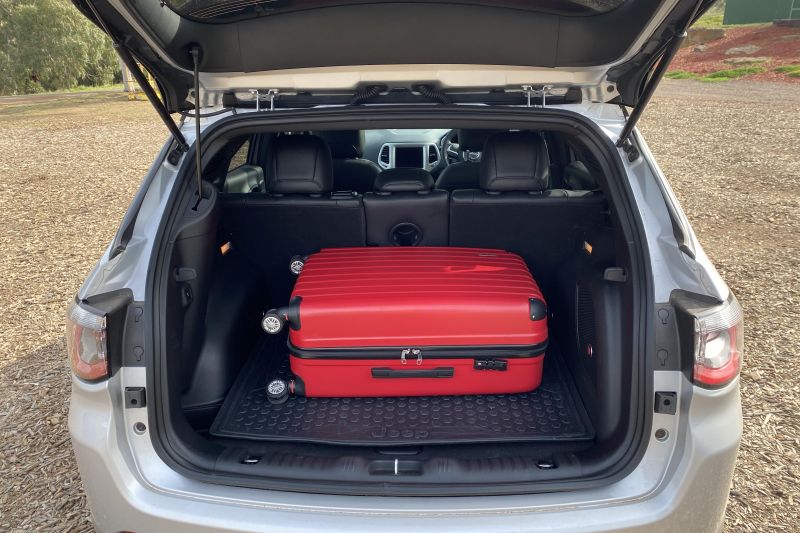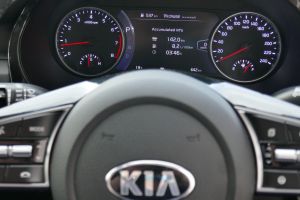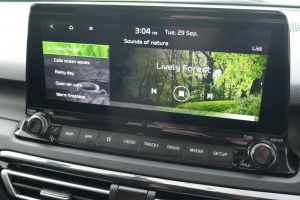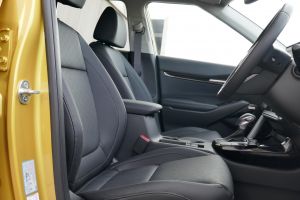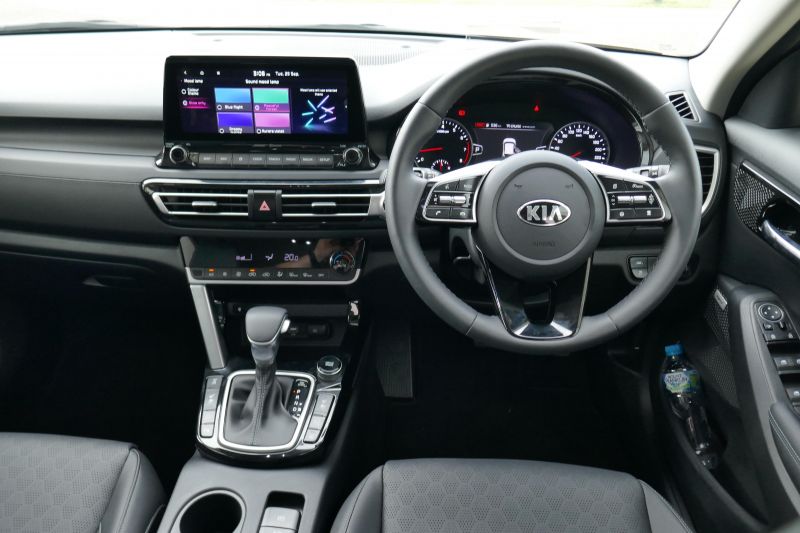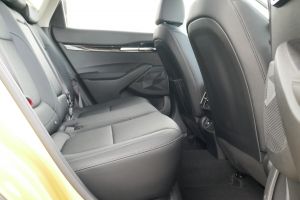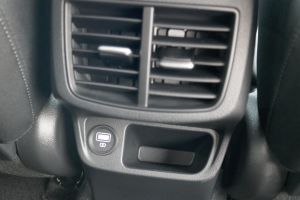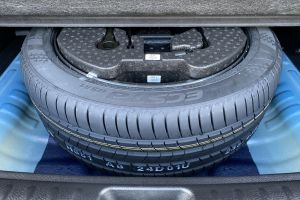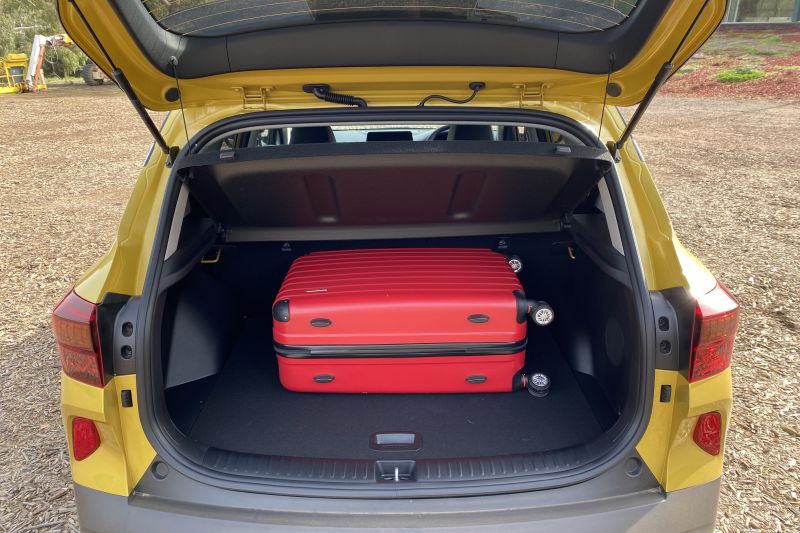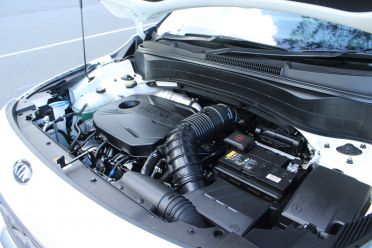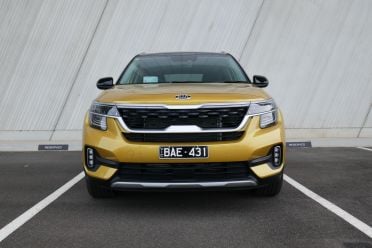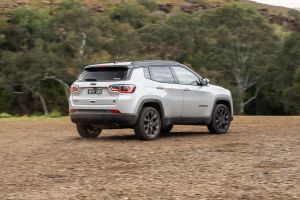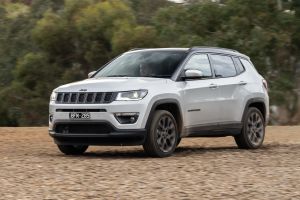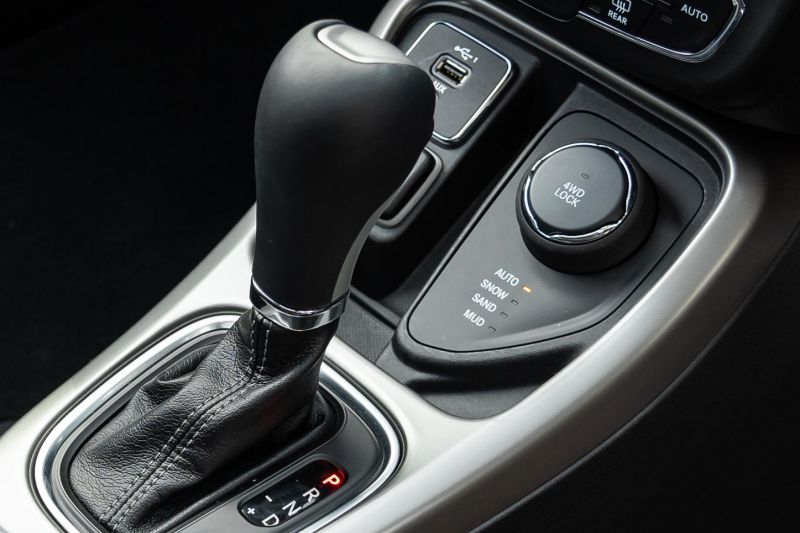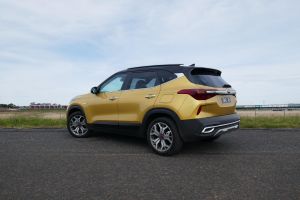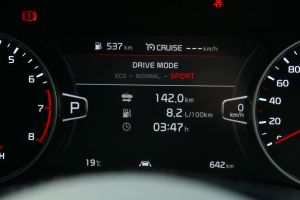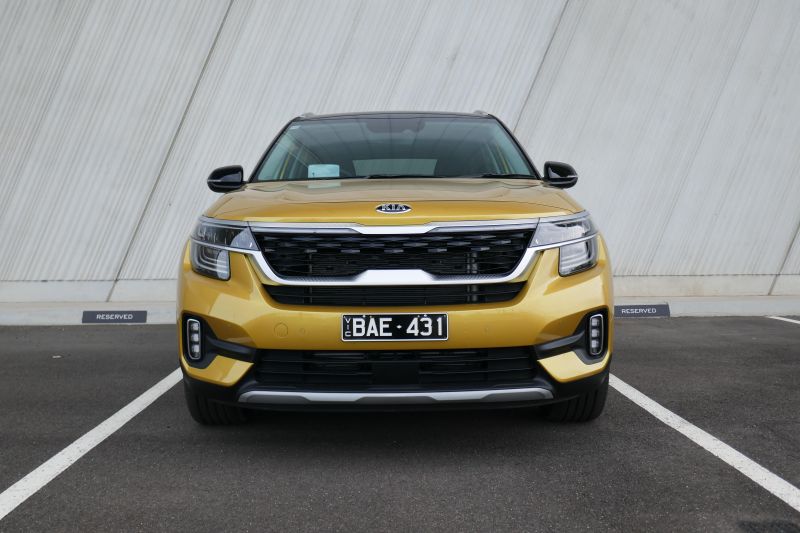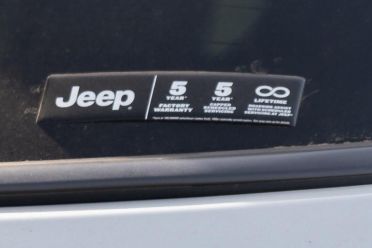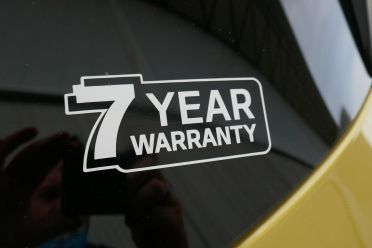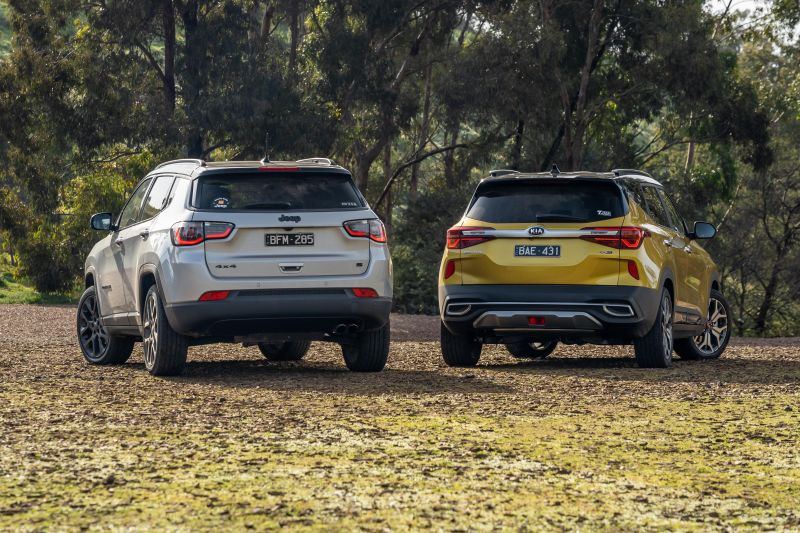This is not the most obvious comparison test. Kia’s big-selling Seltos seems more like a competitor to fellow top-sellers such as the Mitsubishi ASX, Honda HR-V or Mazda CX-30.
The Jeep Compass, by contrast, is more of a niche seller in Australia. But after receiving some updates earlier in the year, we thought it worth a second look. This version is certainly better than its predecessor model, which had its devotees.
This pair attempt to answer a similar question in different ways: is the sporty and youth-focused Kia a better bet, or is the adventure-ready, heritage-toting Jeep?
How much?
We’re looking at two highly-specified grades here. The Compass S-Limited sits above the Night Eagle and the Limited, and below the hardcore Trailhawk. By contrast the Seltos GT-Line is its range’s flagship variant.
The Jeep’s list price is $45,950 before on-road costs (Night Eagle costs $36,950, Limited $42,950, and Trailhawk $49,450). This translates to an estimated drive-away quote in Victoria of $50,800 before haggling. That’s base Audi Q3 money, though in fairness Jeep sees itself as a semi-premium proposition.
The Kia’s list price is $41,100, but the gap is widened because Kia offers national drive-away pricing of $42,990 regardless of your location.
What do you get?
Common features include privacy glass, a sunroof (the Kia only gets this if you don’t have the contrasting roof paint, which our test car had), proximity key fob, and rain-sensing wipers.
The Jeep alone offers a powered tailgate and its 19-inch wheels are larger than the Kia’s 18s. The Kia’s headlights are LED as opposed to the Jeep’s bi-xenons.
Inside both have climate control, heated (front) leather seats, satellite navigation, Apple CarPlay and Android Auto, digital radio, and a 7.0-inch digitised trip computer.
Above this list the Kia adds front-seat ventilation, a larger 10.25-inch touchscreen (versus 8.4-inches in the Jeep), a head-up display, and a wireless phone charger. The Compass’s nine-speaker audio system compares to the Kia’s eight.
Are they safe?
They ought to be. The Jeep has a 2017 ANCAP five-star crash rating, and the Kia an even tougher 2019 date-stamped five-star score.
Both have dual-front, dual-front-side, and full-length curtain airbags (the Jeep adds a driver’s knee-bag too), and safety systems such as forward autonomous emergency braking (AEB), blind-spot monitoring, active lane-keeping aids that nudge you between road lines, rear cross-traffic alert, and active cruise control.
The Kia’s AEB is also designed to detect bikes and pedestrians, while the Jeep alone has active parking assist. A final function worth flagging is the Kia’s Safe Exit Alert which warns you of an approaching car running parallel if you’re stationary and preparing to open your door. For those who don’t do the ‘Dutch reach’ manoeuvre to check for cyclists, it could save a life.
What are they like inside?
Jeep
The build quality is generally good and contact points – dash, armrests, console lid – are padded and nicely stitched.The use of contrasting plastic trims bits livens things up. It’s quite an appealing cabin on first impression, with the exception of the cheap-feeling indicator and wiper stalk that don’t have a particularly tactile action.
There’s a decent breadth of (nicely leather-trimmed) seat and steering wheel adjustability and a nice commanding driving position on offer, though I found the wheel’s rim and spoke design to be a little too thick for total comfort, and found the headrest positioning a little hard on the upper neck. But, everyone is different and it may be fine for you.
The big square touchscreen is decent, with sufficient responsiveness and a relatively intuitive infotainment system with a shortcut toolbar running along the bottom. The navigation, phone mirroring, rear-view camera, and Bluetooth pairing all worked as they ought to. That Bose sound system with nice door speaker covers is also high quality.
You control cabin ventilation with chunky dials and tactile buttons located below the screen, and below this are you 4×4 dial and a USB point. The narrow transmission tunnel doesn’t offer much in the way of storage beyond two cupholders and a small closing console, despite the application of an electric parking brake switch.
That said, the passenger-side seat base does flip upwards to reveal a handy hiding spot. I’ve seen similar setups in work vans, but it’s perfect for an adventurous SUV too, since the base is finished in hard washable plastic.
The back seats offer sufficient space for two average-sized adults, though at 194cm I was on the borderline of comfort. The middle seat has a much shorter base than the outboard ones, as the images show. That large sunroof is a nice touch, and nary was there a squeak to be heard from it, pointing to decent body rigidity on our new test vehicle.
Rear-seat amenities include separate air vents in the back of the console, as well as a USB point and a proper power point (230V). There are also outboard ISOFIX child-seat anchor points, as well as top-tethers.
The boot is on the narrowish side, though as you can see it’ll still swallow two big suitcases stacked atop one another. Our tester came with a Jeep-branded floor mat accessory, and there’s a space-saver spare wheel beneath. The seatbacks also fold downwards to maximise the loading area. The middle-seat portion also flips down, though there’s nothing behind it to stop stuff from the boot entering the cabin.
Ergonomic quirks include the hard-to-remove solid fabric-covered parcel shelf, that really takes some effort to take out, and the placement of the electric tailgate closing button on the lower left-hand side of the cargo storage area.
Kia
Quality and material quality overall is top notch, save the overuse of scratch-prone glossy black bits. The lovely leather-wrapped steering wheel has reach and rake adjustment, and the seats are heated and ventilated unlike the Jeep. The flip-up head-up display’s height adjustment had a setting that just worked for me, though I’d prefer a unit the projected onto the windscreen.
The design is a bit austere, though two things liven up the vibe: the wavy Bose speaker covers are even cooler than the Jeep’s, and the ambient light piping along the dash and in the footwells comes in a multitude of colours and even pulses along to the beat when switched on. These add some really nice contemporary touches.
The wide centre screen takes up a lot of real estate, has good speed, and an intuitive interface. The home screen has three tiles that show maps, audio, and trip data. But there’s a crisp camera view, and phone mirroring – albeit not of the wireless variety.
The fact Kia has retained a sequence of buttons and knobs to act as shortcuts is a good thing in my book. I also thought the audio quality was pretty good, without too much distortion or unpleasant vibrations during bass-heavy tunes. Both of these SUVs have good systems.
Storage options include four cupholders, door bottle holders, coat hooks, and decent centre console and glovebox areas. It’s slightly better than the Jeep, though on second thought the latter’s under-seat cubby is pretty cool.
In the rear it’s pretty spacious for the segment, offering as much legroom as the Jeep and a smidge more toe room. This model had the contrasting roof paint so lacked a sunroof. It’s a matter of taste, but I prefer this setup as it maximises headroom. We also noticed creaking from the sunroof on the last Seltos we borrowed, when going over rugged surfaces.
Rear occupants get vents and USB access, LED reading lights, and seatback pockets. Parents will like the hard plastic front-seat-backs that feel ready to stand up to abuse from stroppy kids. The side windows are also larger and let in more light than a Toyota C-HR’s or CX-30’s do, or the Jeep for that matter. Both ISOFIX and top-tether points are fitted.
The boot space with five seats in use is 433 litres, which as the picture shows is enough for a large hard-shell case and backpack to sit comfortably side-by-side. It’s a smidge wider than the Jeep. The capacity is actually larger than most competitors, despite the full-sized alloy spare living under the floor. The back seats fold pretty flat to up cargo space. However, unlike the Jeep, the tailgate must be operated manually.
Overall, while the Jeep has some nice touches and a well-considered mix of tactile luxury and off-road ruggedness, the Kia’s interior has better infotainment tech, crisper displays, and moderately more practicality. It impressed me more.
| Jeep Compass S-Limited | Kia Seltos GT-Line | |
|---|---|---|
| Length | 4394mm | 4370mm |
| Width | 1819mm | 1800mm |
| Height | 1644mm | 1620mm |
| Wheelbase | 2636mm | 2630mm |
What’s under the bonnet?
Both run on petrol power.
The Jeep’s 2.4-litre naturally aspirated engine produces 129kW of power at 6400rpm and 229Nm of torque at 3900rpm. The Kia’s 1.6-litre turbo makes 130kW at 6000rpm and 265Nm between 1500 and 4500rpm.
The Jeep uses a nine-speed automatic with torque-converter, whereas the Kia uses a sportier seven-speed dual-clutch automatic (DCT). Both cars have standard all-wheel drive systems with modes that lock torque delivery between the front wheels and rear wheels.
As you might expect, the Kia is both more fuel efficient (7.6L/00km versus 9.7L/100km), but also quicker to 100km/h from standstill (8 seconds versus 10.1 seconds).
It’s worth noting here that the Jeep Compass Trailhawk comes with a torquier diesel engine, while entry grades of the Seltos use a less-potent naturally aspirated 2.0-litre petrol and CVT combination.
| Jeep Compass S-Limited | Kia Seltos GT-Line | |
|---|---|---|
| Fuel type | Petrol | Petrol |
| Displacement | 2.4-litre | 1.6-litre |
| Induction | Naturally aspirated | Turbocharged |
| Power | 129kW | 130kW |
| Torque | 229Nm | 265Nm |
| Tow rating | 1000kg | 1250kg |
| Drive | AWD with lock mode | AWD with lock mode |
| Transmission | 9-speed auto | 7-speed DCT auto |
| Fuel economy | 9.7L/100km | 7.6L/100km |
| 0-100km/h | 10.1 sec | 8.0 sec |
How do they drive?
Jeep
The Jeep’s naturally-aspirated engine offers instant response around town, and the nine-speed automatic is better-calibrated and less dozy than some iterations of similar transmissions we’ve sampled. But performance is never anything greater than ‘average’, and fuel consumption is below-par. At times we were averaging 12L/100km which is not good enough, though that figure comes down on highways.
On road, the Compass doesn’t feel quite as agile as the Kia does, and the ride quality over bad surfaces isn’t perfect thanks to those large wheels. This is more obvious at low speeds. Body control through corners is not exactly hatch-like. There’s a little bit of lean, though graded on a curve it’s likely the average punter will find it acceptable.
Where the Jeep does do quite well is soft-roading. It has 35mm more clearance than the Kia, and various traction modes that change the throttle and ESC calibration to better suit low-grip surfaces. The AWD system also has a lock mode that fixes the torque split. I took both the Jeep and Kia over some offset moguls, up a loggy hill, and over some soft sand, and the Compass to its credit handled these chores better than the sportier, road-biased Kia did.
With that said, the ‘Trail Rated’ Compass Trailhawk model is the one to go for if you want to go soft-roading. It has a torquier diesel engine, a low-range system with 20:1 crawl ratio, a Rock Mode, rescue hooks, four underbody skid plates, and a full-size spare. In fact, if Jeep is pitching the Compass as the adventurous choice in the segment, then the Trailhawk is the one that really embodies this.
Kia
The turbo engine doesn’t have a particularly entertaining exhaust note – the Cerato GT’s inducted note seems absent – but the pickup is good and the wide torque band ensures you’ve always got reserves of oomph in hand. An easy 8.0-second 100km/h dash is warm-hatch-like. It’s nice, frankly, to drive a small SUV that has sufficient power to actually make you smile!
The DCT is pretty smooth as far as these transmissions go, especially once you’re rolling and into second, though the presence of a transmission fluid temperature gauge in the instruments suggests constant hill starts off-road might challenge it. Indeed, it did start to warm up a little after repeated attempts to climb that aforementioned loggy hill. But are any buyers doing this?
The AWD system defaults to being front-wheel biased, but on slippery surfaces it’s good to be able to reactively send engine torque to the rear. Numerous competitors do not have this option at all. There are various driving modes to flick through, with the Sport setting telling the transmission to hold lower gears for a little longer and adding some weight to the already fairly resistant steering – something that not all target buyers will love.
Unlike numerous competitors, turbo versions of the Seltos come with independent (multi-link) rear suspension to help with road holding, alongside McPherson struts up front, and passive dampers.
As per the norm, Kia’s Australian engineering team requested some changes to the factory settings based on local testing, and has settled on a firm-ish ride that keeps the body well controlled through corners. The Seltos is a tenacious handler, rather car-like actually.
Ride quality is generally fine, though those slimmer-sidewall tyres and larger wheels necessarily take the edge off sharp-bump absorption. However, it felt better at absorbing and filtering out the constant pitter-patter that the Jeep exhibited at low speeds over rutted roads.
| Jeep Compass S-Limited | Kia Seltos GT-Line | |
|---|---|---|
| Front suspension | MacPherson strut | MacPherson strut |
| Rear suspension | Chapman strut | Multi-link |
| Front brakes | Ventiled disc – 305mm | Ventiled disc – 305mm |
| Rear brakes | Solid disc – 278mm | Solid disc – 284mm |
| Tyres | 235/45 R19 | 235/45 R18 |
| Weight | 1503kg | 1470kg |
| Ground clearance | 212mm | 177mm |
| Spare tyre | Space-saver | Full-size |
Cost of ownership
The Jeep Compass is covered by a five-year warranty and a 24/7 roadside assist plan. The capped-price servicing plan keeps each dealer service price to $399 a pop, at intervals of 12 months or 12,000km.
The Kia Seltos comes with a longer seven-year warranty and roadside assist that’s renewed while you use a Kia dealer for servicing. The turbo drivetrain isn’t cheap to service though: the first five visits are $282, $473, $346, $607 and $317, and the intervals are just 10,000km/annual.
CarExpert’s Pick
The Jeep Compass has some ‘cool factor’, enhanced by the lack of them out there on the roads. It’s also quite capable at light-duty 4×4-ing, has manageable servicing costs, plenty of safety features, and a nice interior.
But the Kia Seltos’ value-for-money, sharper dynamics, punchier engine, longer warranty, and more engaging interior tech make it the superior offering here in my mind. If you really want a Compass, the Trailhawk has more unique selling points.
For even more detail, check out our existing single-car review videos on both choices below.

